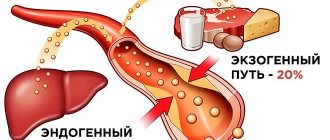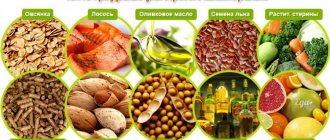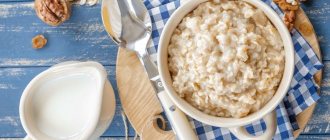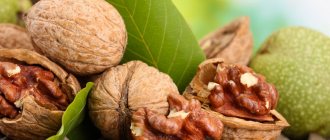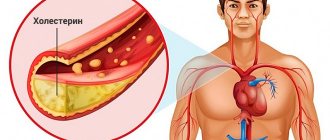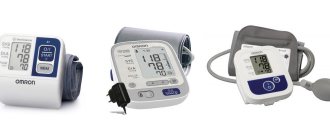A cholesterol-lowering or hypocholesterolemic diet is usually prescribed for medical purposes in order to significantly lower blood cholesterol levels. And as an addition, you can lose a few extra pounds. This diet was developed with the help of cardiologists, since increased cholesterol can lead to various cardiovascular diseases and atherosclerosis. The risk of developing a heart attack and coronary heart disease increases significantly. The fact is that hypercholesterolemia can also be a hereditary disease, and as a rule, a diet has been specially developed for such people that will help reduce the level of bad cholesterol in the blood.
The essence of the hypocholesterol diet
In fact, cholesterol is an important product that is produced in the liver and serves many vital functions of the body. But increasing its level can lead to adverse consequences: atherosclerotic plaques appear, which are deposited in the blood vessels, thereby causing blockage of the arteries. And that, in turn, already affects the appearance of other terrible cardiovascular diseases.
Content:
- The essence of the hypocholesterol diet
- Basic rules of the hypocholesterol diet
- Prohibited Products
- Authorized Products
- Menu for a week with a hypocholesterolemic diet
- Recipes for a hypocholesterol diet
- Contraindications and harms of a hypocholesterol diet
- Results of a hypocholesterol diet
- conclusions
Lately, the problem of high cholesterol has been a concern for many people, as modern life makes its own adjustments to people’s diet and lifestyle. Doctors attribute this primarily to the increased content of “bad” fats in our diet. But it’s true, not many people are able to pass by such delicious-smelling fast foods and fast food chains. And also with regular consumption of alcoholic beverages, smoking, excess weight, hereditary factors and, of course, a sedentary lifestyle.
At its core, the hypocholesterol diet is aimed at reducing the consumption of foods that contain high levels of cholesterol. There are immutable rules of this diet, the observance of which will not only normalize cholesterol levels in the body, but also lose excess weight and radically change your lifestyle, thereby helping to improve your overall well-being.
Causes of allergic dermatitis
Allergic dermatitis includes many inflammatory processes on the skin associated with the negative effects of irritants, most often food allergens. Very often, the disease is provoked by certain foods - the pathogen enters the circulatory system through the gastrointestinal tract. It is also worth noting indirect causes that can also cause symptoms of allergic dermatitis. These include:
- genetic predisposition;
- hormonal disorders;
- deficiency of vitamins and minerals in the body;
- unbalanced diet;
- stress and nervous tension;
- mental disorders;
- physical overload;
- autoimmune diseases;
- disruptions in stomach functions.
The environment also influences the development of the disease - in regions with poor ecology there are more patients with this pathology than in areas with a favorable environmental situation.
Basic rules of the hypocholesterol diet
In order for the results of a hypocholesterol diet to be pleasing, it is necessary to follow the basic rules, any violation of which will only worsen the general condition and will minimize all efforts.
Here is a list of these recommendations:
- avoidance of harmful animal fats, or reducing their consumption to a minimum;
- mandatory consumption of fish, except fried fish, about twice a week;
- replace fatty meat with more dietary meat: turkey, chicken, rabbit or veal;
- Alcoholic drinks are strictly prohibited;
- excluding flour and sweet foods from the diet, or reducing their consumption to a minimum;
- use of vegetable dishes, fruits and low-fat dairy products in the daily menu;
- using stewed or boiled food instead of fried;
- a categorical ban on the use of mayonnaise, replacing it with lemon juice and spices;
- Cool meat broth before use and skim off the top layer of fat;
- It is advisable to cook the bird without fat and skin.
Description
The goal of the diet is to reduce and normalize cholesterol in a blood test to a standard level.
Excess cholesterol leads to the following problems in the body:
- the occurrence of excess weight;
- disruption of the heart;
- high blood pressure;
- deterioration in general health.
Cholesterol is an organic substance produced in the body. It also comes from food, primarily of animal origin; it is practically never found in vegetables and fruits.
Prohibited Products
Prohibited foods on a hypocholesterol diet include:
- various types of sausages, sausages, small sausages, smoked meats;
- fatty meats, offal, as well as duck or goose meat;
- egg yolks, heavy cream, sour cream and cottage cheese, condensed milk and processed cheese;
- butter, coconut, palm oil, lard, animal fats and hard margarine;
- canned fish and other preserves;
- various nuts (peanuts, pistachios, hazelnuts), chips, candied fruits and French fries;
- baked goods, biscuits, rolls, cakes and other confectionery products;
- all types of sugar, chocolate, sweets, as well as marshmallows and marmalade;
- alcohol, strong coffee with cream and cocoa.
Contraindications, side effects
A cholesterol-lowering diet for patients with hypertension and other diseases caused by high cholesterol has a number of limitations.
Not every patient will be able to adhere to it:
- due to restrictions, it is inadmissible for pregnant women and those who continue breastfeeding;
- cannot be observed by minor children;
- prohibited for people with cancer;
- If a person has kidney pathologies, before prescribing this diet plan, it is worth consulting with a nephrologist.
Treatment table No. 10 is distinguished by the fact that even with long-term adherence it does not cause side effects. The patient's condition is normalized and his health improves.
Authorized Products
Allowed foods for high cholesterol include:
- all lean meats (veal, chicken, turkey, rabbit, as well as wild animal meat);
- You can only eat egg whites no more than 2 times a week;
- low-fat milk and fermented milk products, cheeses with no more than 20 percent fat content;
- vegetable oils (sunflower, corn, olive, soybean), soft margarine;
- sea fish (sardine, salmon, tuna, flounder, mackerel, cod and herring), as well as caviar and seafood about twice a week;
- various fresh or frozen vegetables, legumes, dried fruits and corn;
- whole grain bread, durum wheat pasta, oatmeal and oatmeal cookies, brown rice, low-fat puddings and sorbet;
- popsicles and frozen juice, various jellies and smoothies;
- sugar-free juices, various teas, weak coffee and mineral water.
Advantages and disadvantages
Treatment table No. 10 has its advantages and disadvantages. They are presented in the table.
| Positive sides | Negative Features |
| The diet is balanced, there is no obvious lack of any element. Effectively solves problems and helps fight high cholesterol. Does not require special or expensive products. In people with a predisposition to the problem, it helps reduce the likelihood of an increase in the indicator. When repeated periodically, it helps prevent recurrence of the condition. | The power supply plan is designed for a long time. Such a long-term diet may be difficult for some people Has contraindications. |
Menu for a week with a hypocholesterolemic diet
The menu for a week with high cholesterol levels should consist only of permitted foods, of which there are quite a lot, so creating a daily balanced diet will not require much effort.
Below is a sample menu based on which you can come up with your own meal plan.
Monday:
- breakfast - low-fat cottage cheese (150 grams), green or herbal tea, oatmeal;
- second breakfast - some berries or an apple;
- lunch - low-fat meat or vegetable soup, boiled chicken breast (100 grams), vegetable salad seasoned with a small amount of vegetable oil, a slice of rye black bread;
- afternoon snack - unsweetened yogurt or any fruit;
- dinner - two boiled egg whites, green beans with carrots (stewed or cooked in a double boiler).
Tuesday:
- breakfast - fruit salad, a glass of low-fat fermented milk product, a slice of whole grain bread;
- second breakfast - any fruit or fruit jelly without sugar;
- lunch - baked or steamed fish (150 grams), cabbage salad with carrots, seasoned with balsamic or soy sauce and a small amount of vegetable oil;
- afternoon snack - cheese with rye or whole grain bread and herbs;
- dinner - two stewed beef meatballs with stewed vegetables (peppers, cauliflower, carrots).
Wednesday:
- breakfast - buckwheat porridge and tomato or vegetable juice;
- second breakfast - baked apple with honey, black tea;
- lunch - pureed vegetable soup, a slice of bread with bran, salad with mushrooms (oyster mushrooms or champignons).
- afternoon snack - green tea and one marshmallow;
- dinner - stewed rabbit (250 grams) and Greek salad.
Thursday:
- breakfast - cheesecakes with fruit jam (4 pieces), apple and carrot salad with nuts, a glass of low-fat fermented milk product;
- second breakfast - rosehip decoction, dried fruits (5 prunes and the same amount of dried apricots);
- lunch - gazpacho, boiled veal (150 grams), a piece of gray or whole grain bread;
- afternoon snack - low-fat cottage cheese with raisins and unsweetened compote;
- dinner - durum wheat pasta and baked or steamed fish (150 grams).
Friday:
- breakfast - millet porridge with apple, rosehip decoction;
- second breakfast - any low-fat fermented milk product;
- lunch - seafood and olive salad, a glass of any unsweetened fruit juice;
- afternoon snack - some grapes;
- dinner - boiled beans with spices, tomato and cucumber salad, seasoned with a small amount of vegetable oil.
Saturday:
- breakfast - lazy dumplings, black or green tea;
- second breakfast - tomato with cheese;
- lunch - vegetable hash, a slice of bran or whole grain bread;
- afternoon snack - any two fruits;
- dinner - boiled potatoes, turkey, vegetable salad.
Sunday:
- breakfast - weak coffee with milk, oatmeal and one egg white;
- second breakfast - fruit jelly or fruit ice cream;
- lunch - low-fat chicken soup, boiled or baked veal (100 grams), radish salad;
- afternoon snack - orange or unsweetened yogurt;
- dinner - risotto with mushrooms or spaghetti in tomato sauce, boiled beet salad.
Expert opinion
A lipid-lowering diet should be used as part of the treatment of certain diseases under the direct supervision of a physician. It plays a supporting role, but not a determining one. Without appropriate therapy, it is impossible to cure, for example, heart disease with diet alone. Such pathologies should be treated exclusively in a hospital setting under constant supervision. As for weight correction, you definitely shouldn’t expect great results from a lipid diet. It is generally impossible to maintain a low-calorie diet for a long time without medical indications. The best option for losing weight is proper nutrition, physical activity and the ability to control eating habits.
Recipes for a hypocholesterol diet
It is quite easy to diversify the menu during a hypocholesterol diet, since there are quite a lot of foods that are allowed to be consumed. For daily use, such popular dishes as: okroshka, only instead of sausage you can cut boiled chicken fillet or lean veal, vegetable stew with rabbit, risotto with mushrooms and vegetables, cheesecakes, seafood salad, gazpacho, pilaf with dried apricots and prunes and much more. other delicious dishes.
Syrniki
To prepare such a tasty and healthy dish you will need:
- low-fat cottage cheese - 300 grams;
- semolina - 2 tablespoons;
- flour - 4 tablespoons;
- egg white - 2 pieces;
- soda - 1 teaspoon.
Beat the whites with a small amount of sugar, add grated cottage cheese. Then add flour, soda and semolina to the mixture and stir until a homogeneous consistency is obtained. Spoon the resulting mixture onto a baking sheet lined with foil or parchment and cook in the oven at 180 degrees for 15 minutes.
Gazpacho
Gazpacho is a cold Spanish soup made from pureed raw vegetables. To prepare it you will need:
- large fleshy tomatoes - 3 pieces;
- cucumber - 1 piece;
- sweet bell pepper - 1 piece;
- white bread - 1 slice;
- garlic - 2 cloves;
- olive oil - 1 tablespoon;
- salt;
- spices;
- ice.
Place the tomatoes in boiling water for a few seconds to make it easier to remove the skin. Soak the bread in warm water. Peel the vegetables and place in a blender along with the bread. Grind everything until you obtain a homogeneous puree-like consistency. Place on plates, add olive oil and herbs. In summer, it is recommended to add a little ice to this soup.
Sweet pilaf
To prepare such an easy and tasty dish you will need:
- brown rice - 250 grams;
- dried apricots - 200 grams;
- carrots - 1 piece;
- prunes - 100 grams;
- apple - 1 piece.
Rice must be boiled before cooking. Cut the apple, carrots and dried fruits into small strips. It is advisable to pre-soak dried fruits for a few minutes. In a cauldron, fry chopped dried fruits, carrots and apples, add boiled rice, stir. Add water and simmer until it evaporates completely.
Reviews
“After the birth of my child, my excess weight did not go away and even began to grow. I went to the doctor, got tested, and found that I had high cholesterol. The doctor prescribed a diet for now, I stuck to it for a week and the weight finally started to go away. I'm glad. I will continue to lose weight."
Marina, 32 years old
“I have no health complaints, but when I had a medical examination at work, we took tests, and cholesterol turned out to be higher than normal. I started eating, following a diet, and suddenly my health improved. Repeated analysis in 2 weeks, but even if the indicator has decreased, I will not give up the diet, I liked it.”
Galina, 57 years old
“I recovered a little and my blood pressure began to bother me. On my mother’s side, everyone has problems with the heart and blood vessels, so I got worried. The cardiologist ordered tests and a monitor. Now I’ve been following a low-cholesterol diet for 2 months, the weight has gone and continues to decrease, which is good news.”
Alexander, 39 years old
Results of a hypocholesterol diet
Best materials of the month
- Coronaviruses: SARS-CoV-2 (COVID-19)
- Antibiotics for the prevention and treatment of COVID-19: how effective are they?
- The most common "office" diseases
- Does vodka kill coronavirus?
- How to stay alive on our roads?
This diet helps to significantly reduce and normalize cholesterol levels in the blood, and also helps improve the condition of blood vessels and the liver. But in order to completely normalize cholesterol levels, diet alone is not enough. It is recommended to take medications prescribed by a doctor, so before “settling” on such a diet, you should consult a cardiologist and nutritionist. The diet is very well balanced, so it can be used throughout life. Thus, having tried this method once and convinced of its effectiveness, you can make such nutrition a way of life. And as a positive addition to such a diet, there will be weight loss and maintaining it at normal levels for quite a long time. In addition to the low-cholesterol diet, it is very good to introduce sports into your daily routine and get rid of bad habits, such as smoking and alcohol. And then you will feel how much your life has changed for the better.
Who is it shown to?
Cholesterol levels rise gradually, the person is not aware of the presence of problems, since the symptoms begin to be taken for granted. Preventive examinations and tests play an important role in diagnosing the condition.
It is recommended to pay attention to timely examination in the following cases:
- weight gain;
- genetic predisposition (problem with cholesterol levels in close relatives)
- close relatives have a tendency to form blood clots;
- the occurrence of angina and arrhythmia;
- presence of diabetes;
- the occurrence of attacks of high blood pressure.
